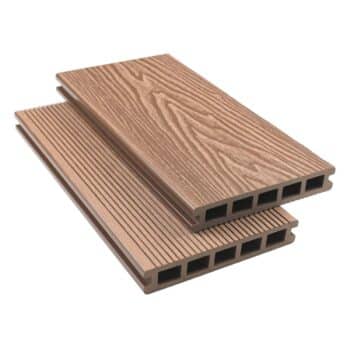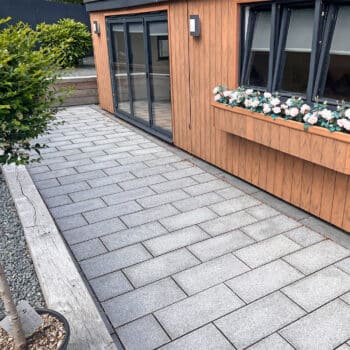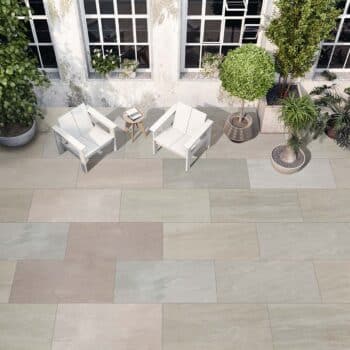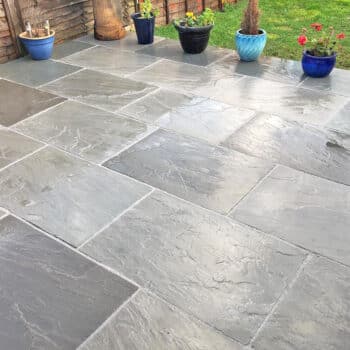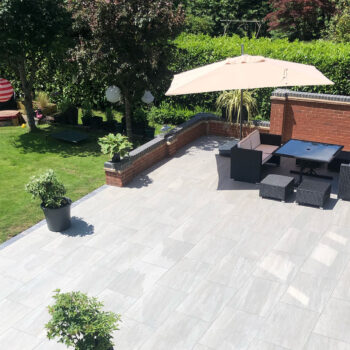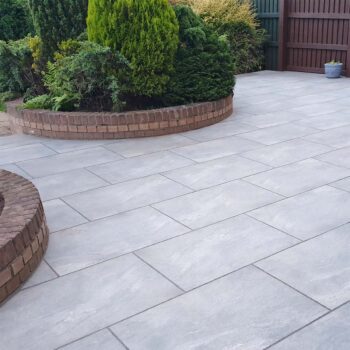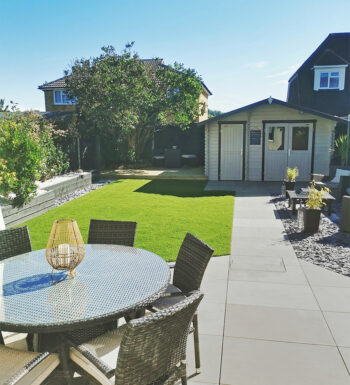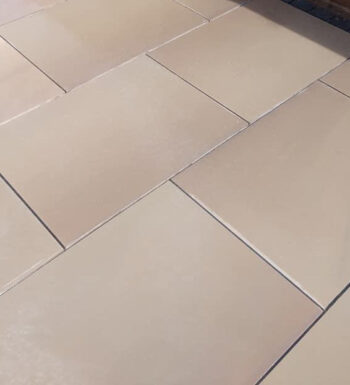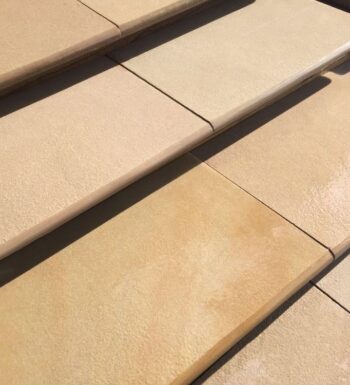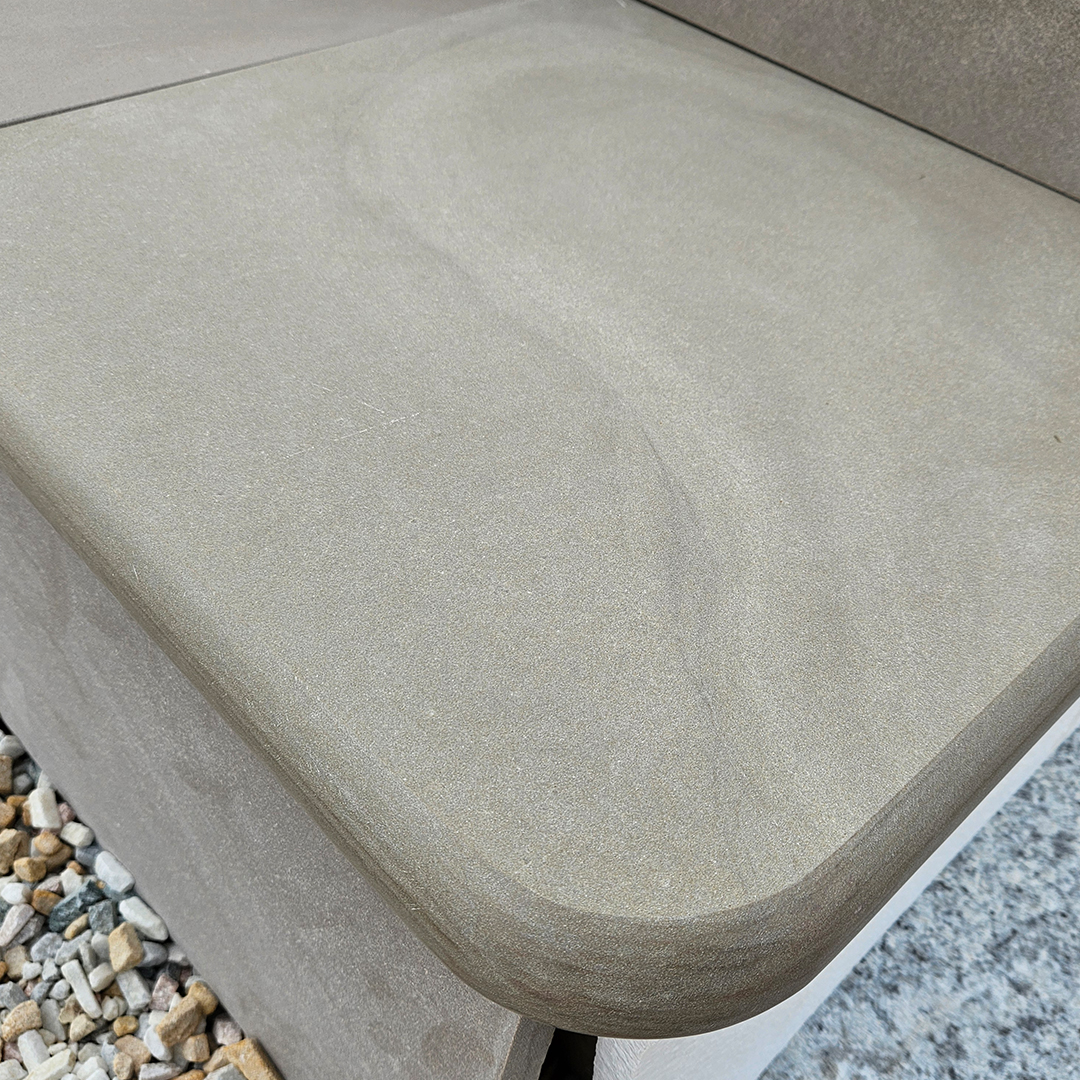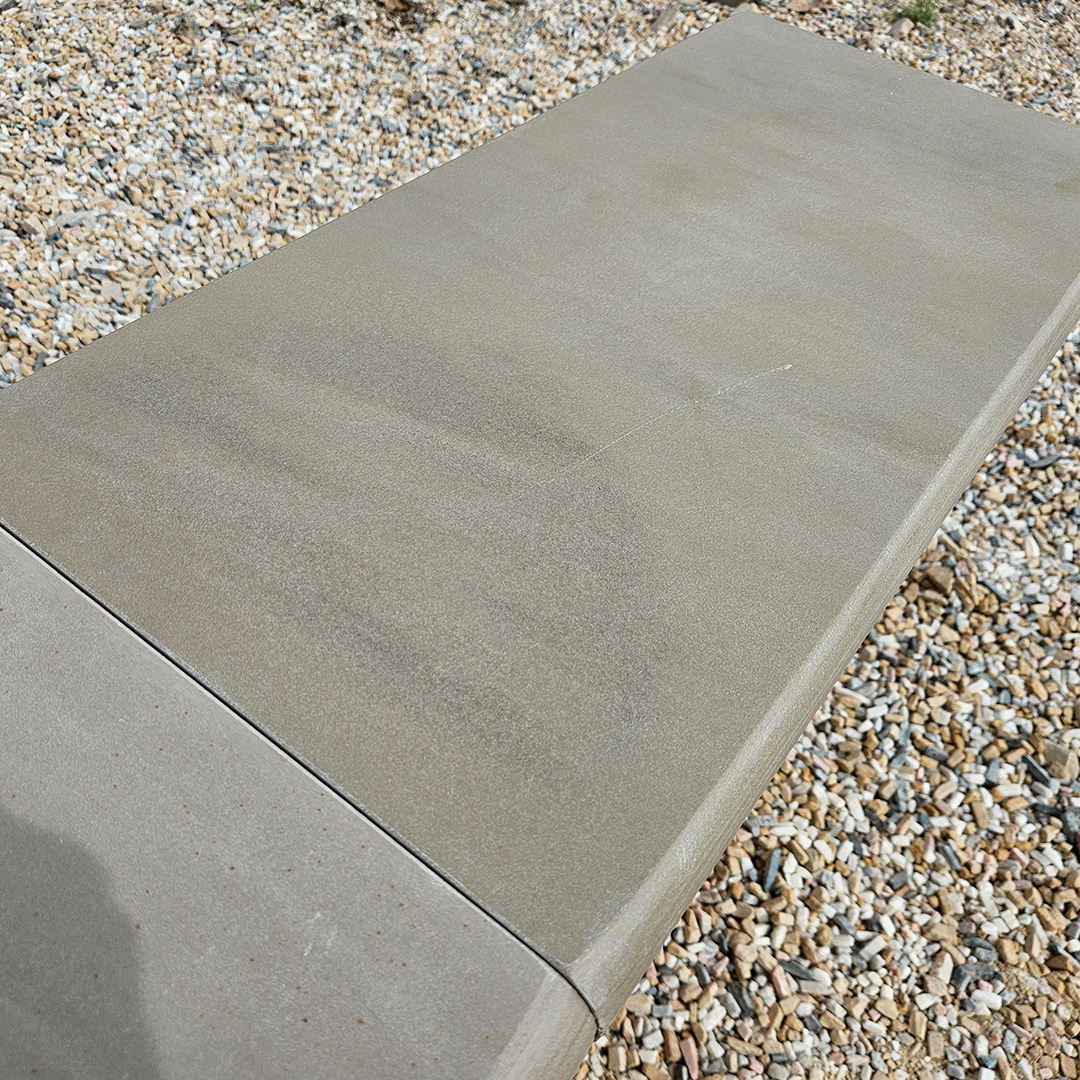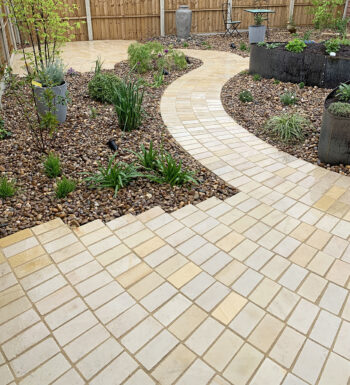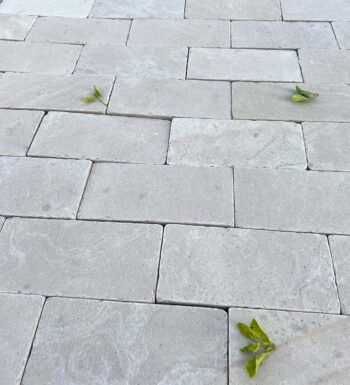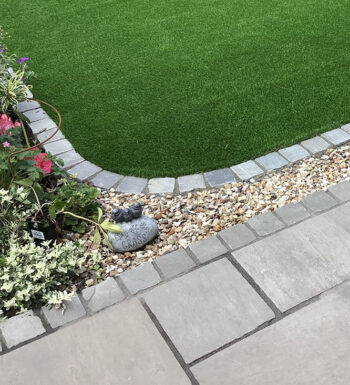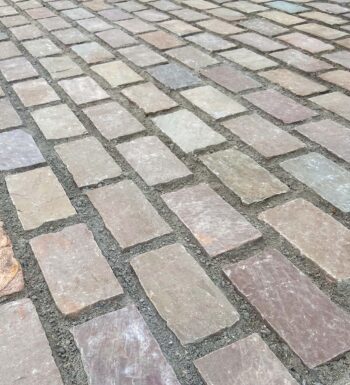Indian Sandstone Paving
Well-known for its natural beauty and tonal variation, Indian Sandstone offers unique colour palettes, subtle veining details and even some plant fossil markings which are created naturally over thousands of years.
The stone is held in very high regard throughout the landscaping industry and is often the go-to choice for many landscapers and garden designers thanks to its versatility, as well as being a much more affordable option when compared to similar stones such as Yorkstone.
All of our products are sourced from the finest quality quarries in India that operate with the highest level of ethical standards as well as CE certification.
Riven or Sawn & Honed? What’s the difference?
A riven surface is created naturally when the stone is split along its layers, providing a truly authentic finish. This process leaves beautiful natural variations in texture throughout the surface of each slab, meaning that no paver is exactly the same, one of the main appeals of Riven Sandstone Paving! Each riven slab features hand-dressed edges which add to the natural, organic look and feel of paving to create a timeless appeal to any traditional design. This style of Indian paving is suited to traditional settings and is a great alternative to Yorkstone, whilst also working out to be less expensive!
Tumbled paving is treated by passing riven slabs through a slowly rotating drum. This process smoothes off the edges, corners and surface of the slab to give the stone a slightly aged look that will blend seamlessly into any space as if it had already been there for years. Tumbled paving is perfect for a traditional patio design with the slightly worn effect adding to the character of the space. The process of tumbling the slabs will also make them less porous, so the stone will not absorb as much water, or any other liquids for that matter, making them much easier to maintain and less susceptible to staining!
Sawn sandstone is sawn straight off the block rather than being split naturally. The sawn slabs are then cut down to size and the top surface is honed or sandblasted, creating a smooth finish with a slight sheen. Our Smooth Sandstone Paving is sawn on all 6 sides, meaning that the 4 edges are also straight and machine-cut with a smooth finish to complete the contemporary look. Sawn sandstone paving offers an entirely different appeal to riven sandstone and features more pronounced patterns and colours. Our sawn sandstone has a level of natural slip resistance and, as long as the paving is maintained, the stone will retain its grip underfoot. We advise taking the usual care and precautions when walking on the slabs when wet, but the slabs are not known to be slippery and are designed specifically for outdoor use.
What is Calibrated Sandstone Paving?
The term ‘Calibrated’ means that the slabs have been cut to a consistent thickness. Calibrated sandstone paving is easier to lay than non-calibrated stone as it eliminates any large variations in thickness between each slab, removing the need to take this into consideration during the laying process. Our Riven Sandstone Paving is calibrated to 22mm and our Sawn Sandstone is calibrated to 20mm and an allowance should be made for +/- 5mm.
Indian Sandstone Paving Colours
Indian stone is available in a wide range of colours ranging from the neutral cream or grey tones in our Sawn Mint and Kandla Grey Sandstone to the range of earthy browns and greens in our Autumn Brown and Raj Green Sandstone. If you’re looking for something a little more vibrant, Rippon Buff and Rainbow Sandstone feature some more eye-catching colours and our Fossil Mint Sandstone offers beautiful natural fossil detailing, formed over thousands of years! For more information on each style, read our Quick Guide To Indian Sandstone Paving Colours!
Sealing Sandstone Paving
It’s generally advised to seal Indian stone slabs to help prevent staining, as well as helping to prevent the growth of any moss or algae. You may want to consider sealing your slabs if your stone is light in colour, as any stains will be more visible, but sealing is not compulsory and there are plenty of options that will provide various results! Some sealants will simply seal and protect, whereas others can even be used to enhance the colour of your slabs. Sealing sandstone paving will also help to protect against other general wear such as fading which can sometimes occur over long periods. As for when to apply a sealer, there are no specific guidelines and most landscapers will have their own tried and tested methods. Some people choose to seal their paving slabs before laying to prevent any staining during the laying process and others prefer to leave their stone unsealed for up to a year, allowing the sandstone to weather naturally first. To find out what is best for you, we always advise speaking to a local tradesperson who will be able to assess the needs of your project. You can find out more about Sealing Paving Slabs on our blog!
From The Blog
Find out more about Indian Sandstone Paving Slabs and discover the full range of options available to you, as well as the different benefits of each!
Order A Sample
With so many options, it can be hard to come to a decision on which styles of Indian Sandstone slabs to choose for your project. This is why we offer our customers samples, allowing you to see and feel the stone before ordering so you can be sure you are making the right choice! Our sample service will allow you to see an example of some of the textures and tones within our paving and you’ll be able to see some great examples of some of the natural variations that you’re likely to see within the stone on each product page.
Contact Us Today
Find the answers to our most frequently asked questions here. Alternatively, to speak to a member of our team, contact us on 01206 700 599 or support@nustone.co.uk.
